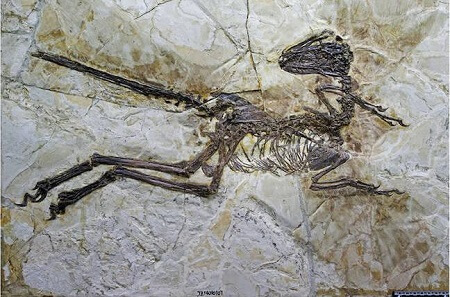 The University of Edinburgh and the Chinese Academy of Geological Sciences have announced the discovery of the latest candidate for the missing link in bird evolution.Zhenyuanlong (zhenyuan’s dragon) is the name of a fossilized “winged dinosaur.” The 6-foot creature is said to have looked “exactly like a turkey or a vulture.” It had “real wings” with vaned feathers on its short arms and tail, but didn’t fly. The interpretation of the artifact is given an evolutionary twist, not because of the evidence itself, but because that is the presumption in the minds of the scientists. Lead researcher Dr. Steve Brusatte says, “So maybe [wings] did not evolve for flight--perhaps they evolved as a display structure, or to protect eggs in the nest. Or maybe this animal was starting to move around in the trees and was able to glide” (“Dinosaur find: Velociraptor ancestor was ‘winged dragon,’” BBC News, July 17, 2015). This is pure presumption. It is nothing but guesswork. There is zero evidence that wings and flight “evolved.” For a “dinosaur” to evolve into a bird would require massive additions of perfectly-ordered information in the DNA to create new, breathtakingly-complex structures, and evolution has never proposed a creative mechanism that could produce such change. “Natural selection,” at best, can only select within the framework of existing genetic information. As for mutations, they are genetic errors. They are neutral at best and are often highly destructive. Mutations do not build layer upon layer of complex, perfectly-ordered genetic code. Whatever “Zhenyuanlong” was, it was not something that evolved. There are a bewildering variety of flying creatures (birds, mammals, reptiles, and insects) as well as winged creatures that don’t fly (e.g., emu, ostrich), and Zhenyuanlong fit somewhere within these categories. (Friday Church News Notes, July 24, 2015, www.wayoflife, org[email protected], 866-295-4143) Comments are closed.
|
Archives
February 2020
|
Ads do not imply endorsement | Policy/Terms of Service | About Us | Contact Us | © Life Work Academy, Inc.
 RSS Feed
RSS Feed

